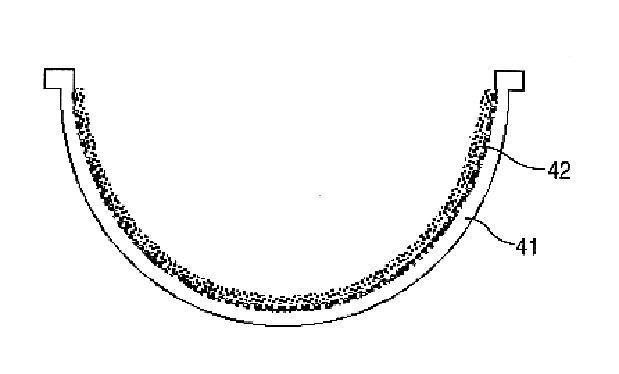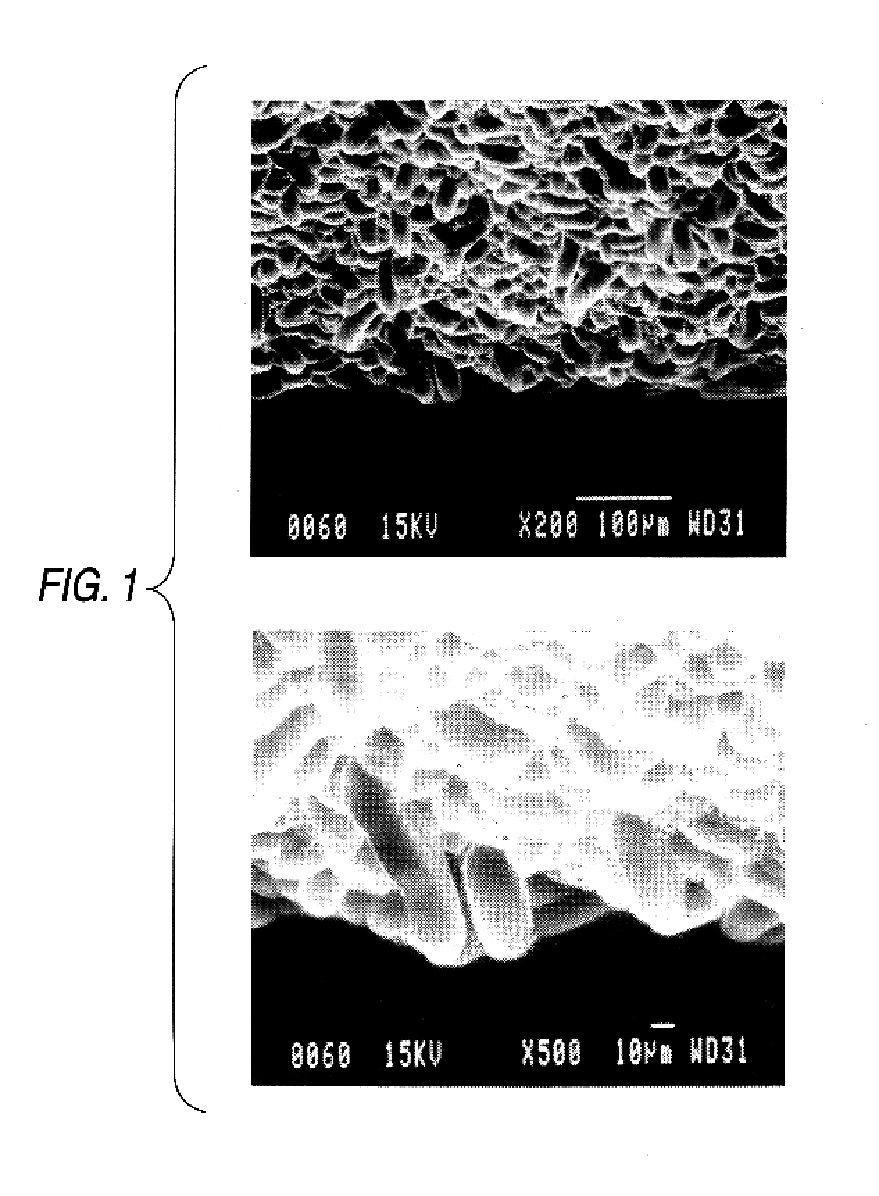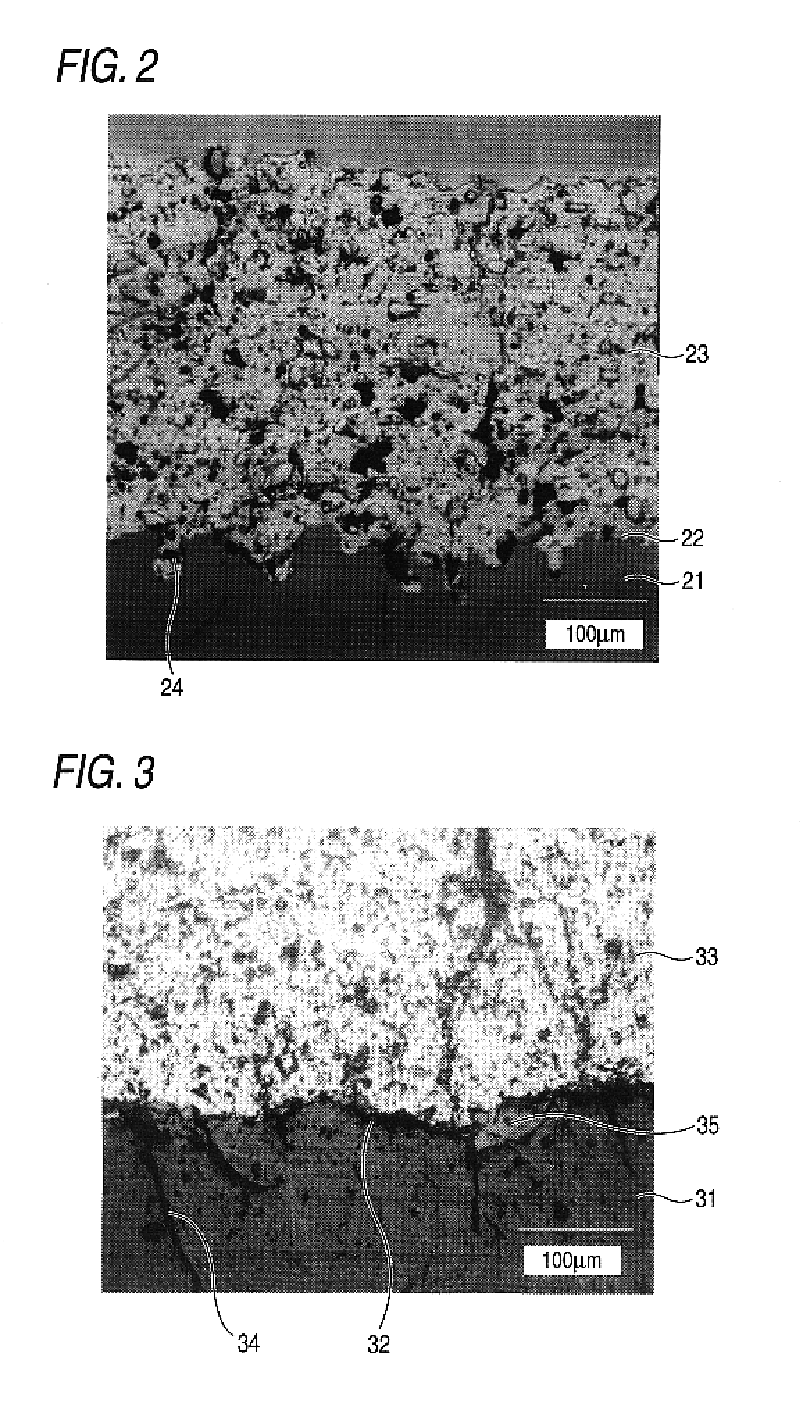Quartz glass parts, ceramic parts and process of producing those
a technology of quartz glass and ceramic parts, applied in the field of quartz glass parts and ceramic parts, can solve the problems of contaminating the interiors of devices and product substrates, deteriorating parts, dust generation, etc., and achieves superior plasma resistance, superior adhesion to quartz glass, and superior adherence
- Summary
- Abstract
- Description
- Claims
- Application Information
AI Technical Summary
Benefits of technology
Problems solved by technology
Method used
Image
Examples
example 1
[0088]A quartz bell-jar to be used for pre-cleaning, as schematically shown in FIG. 4, was prepared. An inner surface of a quartz bell-jar 41 was subjected to blast processing at a pressure of 0.5 MPa using white alumina-made grit WA #60, ultrasonically rinsed with pure water, and dried in an oven. Thereafter, an alumina thermal sprayed coating 42 was formed on the inner surface of the quartz bell-jar by plasma spraying in a flow rate of Ar to H2 of 80 / 20. For the plasma spraying were used two kinds of thermal spraying materials having a purity of 99.8% and having a mean particle size of 30 μm and 50 μm, respectively, each of which was prepared by electromelting pulverization. A film thickness of the thermal sprayed coating varied depending on the place but was from 0.2 to 0.3 mm. A surface roughness Ra of the thermal sprayed coating was 9 μm for the spraying material having a mean particle size of 30 μm and 12 μm for the spraying material having a mean particle size of 50 μm, respe...
example 2
[0090]An inner surface of a quartz bell-jar 41 was subjected to blast processing at a pressure of 0.5 MPa using white alumina-made grit WA #60, ultrasonically rinsed with pure water, and dried in an oven. Thereafter, an alumina thermal sprayed coating 42 was formed on the inner surface of the quartz bell-jar by plasma thermal spraying in a flow rate of Ar to H2 of 75 / 25 at a distance between a plasma gun and a substrate of 150 mm. For the plasma spraying was used a spherical alumina granulated powder (purity: 99.99% by weight) having a mean particle size of 50 μm, as prepared by sintering so as to have a relative density of about 95%. A film thickness of the thermal sprayed coating varied depending on the place but was from 0.2 to 0.3 mm. A surface roughness Ra of the thermal sprayed coating was 13 μm. After the plasma spraying, the bell-jar was ultrasonically rinsed with ultrapure water and dried in a clean oven. There was thus completed a quartz bell-jar corresponding to the first...
example 3
[0091]Quartz glass parts formed with a thermal sprayed coating, corresponding to the first aspect of the present invention, were prepared in the same manner as in Example 2, while using, as a raw material powder, a YSZ power having a mean particle size of 40 μm (partially stabilized zirconia containing 5% by weight of yttria) and spherical granulated particles having a mean particle size of 45 μm, as prepared by mixing alumina (purity: 99.9% by weight) and magnesia (purity: 99.9% by weight) in a ratio of 1 / 1. There were thus obtained quartz glass parts having a film thickness of the thermal sprayed coating of from 0.2 to 0.3 mm and a surface roughness Ra of the thermal sprayed coating of 15 μm and 17 μm, respectively, corresponding to the first aspect of the present invention. The thermal sprayed coating had a relative density measured by the Archimedes' method of 88% and 92%, respectively.
PUM
 Login to View More
Login to View More Abstract
Description
Claims
Application Information
 Login to View More
Login to View More - R&D
- Intellectual Property
- Life Sciences
- Materials
- Tech Scout
- Unparalleled Data Quality
- Higher Quality Content
- 60% Fewer Hallucinations
Browse by: Latest US Patents, China's latest patents, Technical Efficacy Thesaurus, Application Domain, Technology Topic, Popular Technical Reports.
© 2025 PatSnap. All rights reserved.Legal|Privacy policy|Modern Slavery Act Transparency Statement|Sitemap|About US| Contact US: help@patsnap.com



